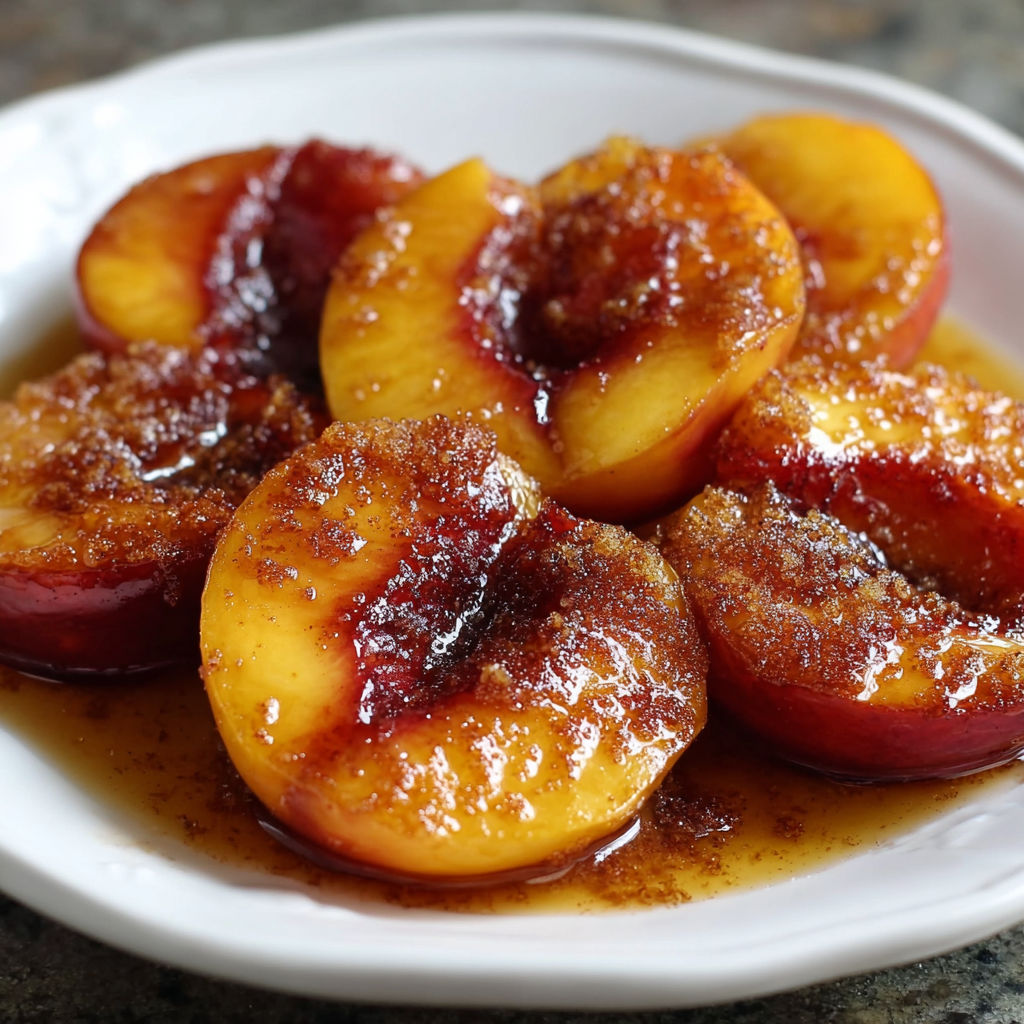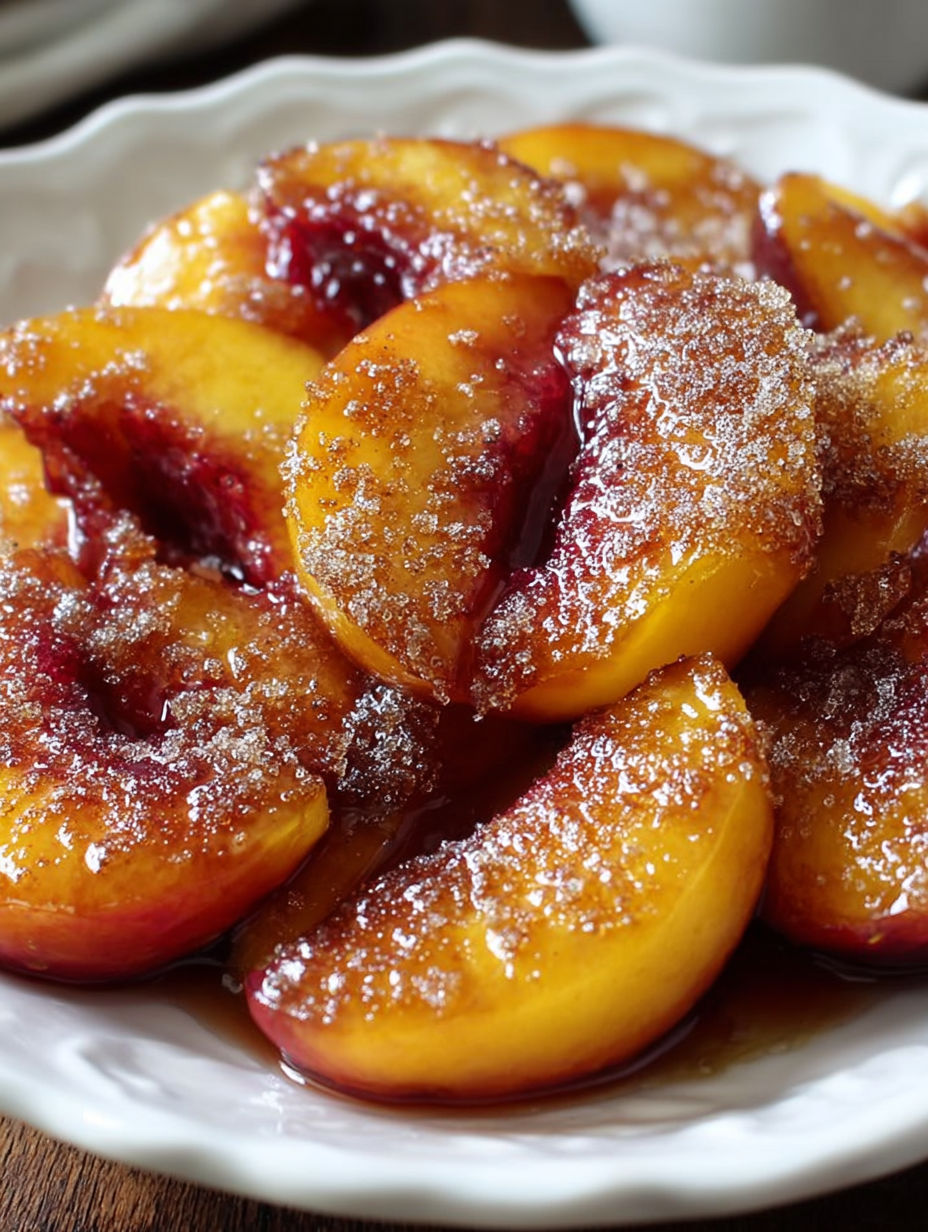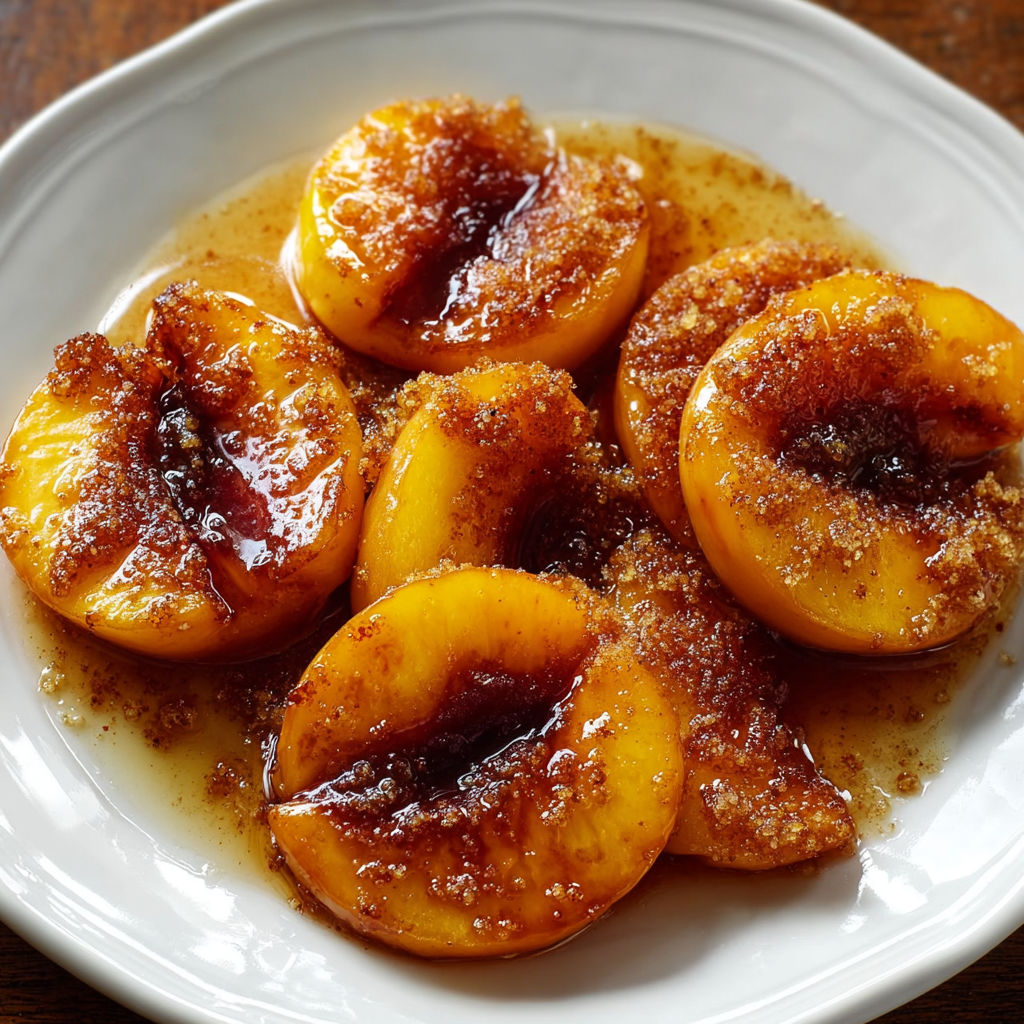 Pin
Pin
This caramelized Southern Fried Peaches dessert transforms simple ingredients into a decadent treat that tastes like summer sunshine. The buttery caramelized sugars create an irresistible syrup that coats each tender peach slice, making an elegant yet effortless dessert that celebrates fresh fruit at its finest.
I first made these fried peaches during a backyard barbecue when peaches were bursting with ripeness at our local farmers market. The simplicity stunned everyone, and now this has become my signature summer dessert that friends specifically request when they visit.
- Large firm peaches ripe but still slightly firm ensures they hold their shape during cooking while remaining juicy
- Unsalted butter creates the rich caramelized base for the fruit to sizzle in
- Granulated sugar delivers classic sweetness and helps create the perfect caramelization
- Light brown sugar adds depth with subtle molasses notes that complement the peaches beautifully
How To Make Southern Fried Peaches
- Prep the peaches
- Gently peel each peach with a sharp paring knife working carefully to preserve the flesh. Cut them in half and remove the pits cleanly. The peach halves should remain intact without tearing for the best presentation.
- Create the buttery base
- Melt the butter in a skillet over medium heat until it begins foaming but not browning. The foaming indicates the butter has reached the perfect temperature to begin caramelization.
- Initial sear
- Place peach halves cut side down into the hot buttered skillet. Allow them to cook undisturbed for 2 to 3 minutes until the edges develop a beautiful golden caramelization. This initial sear locks in juices and begins developing flavor.
- First sugar application
- Carefully flip the peaches and sprinkle half the granulated sugar and half the brown sugar evenly across the fruit. Watch as the sugars begin melting into the butter creating the beginnings of your caramel sauce.
- Continue caramelization
- Allow the peaches to cook for another 2 minutes until the underside browns beautifully. The sugars will begin transforming into a sticky amber sauce.
- Final sugar coating
- Gently turn the peaches again and scatter the remaining sugars evenly across all surfaces. Carefully roll the peaches in the developing syrup to ensure complete coating. The sauce should thicken into a luscious caramel.
- Serve immediately
- Transfer to serving plates while still warm with the caramel sauce spooned generously over each peach half. The contrast between the warm fruit and cool optional toppings creates a delightful temperature experience.
My grandmother taught me this recipe during hot Mississippi summers where peaches were plentiful. She always said the secret was in letting the sugars fully caramelize without rushing. The patience results in that perfect amber color and deep caramel flavor that transforms ordinary peaches into something magical.
Selecting Perfect Peaches
The success of this dish depends largely on choosing the right peaches. Look for fruits that yield slightly to gentle pressure but aren't overly soft. They should have a strong sweet aroma at the stem end. While yellow peaches are traditional for this Southern classic, white peaches can work beautifully too, though they'll create a slightly different flavor profile with their more delicate sweetness.
Serving Suggestions
These caramelized peaches shine as a standalone dessert, but they truly excel when paired with complementary elements. A scoop of vanilla bean ice cream creates the perfect hot and cold contrast as it melts into the warm caramel sauce. For a more sophisticated approach, try serving with a dollop of mascarpone cheese or crème fraîche. Toasted chopped pecans or walnuts add wonderful textural contrast when sprinkled over top just before serving.

Make Ahead Options
While these peaches are at their absolute best when served immediately after cooking, you can prepare components ahead of time when entertaining. Peel and halve the peaches up to two hours before cooking, keeping them in lemon water to prevent browning. When ready to serve, simply drain, pat dry, and proceed with the recipe. The cooking itself happens so quickly that it makes an impressive last minute dessert that will have guests thinking you spent far more time in the kitchen.

Recipe FAQs
- → How do I know if my peaches are ripe enough for this dish?
The best peaches for frying are firm but ripe. They should yield slightly to gentle pressure but not be mushy. If your peaches are too soft, they'll fall apart during cooking; too hard, and they won't develop the proper flavor. Yellow peaches typically work better than white varieties for this technique.
- → Can I use frozen peaches instead of fresh?
Fresh peaches work best for this technique, as frozen peaches release too much moisture when thawed, making it difficult to achieve proper caramelization. If fresh peaches aren't available, thaw frozen peaches completely, pat them very dry, and expect a slightly different texture in the final dish.
- → What's the best type of pan to use for frying peaches?
A heavy-bottomed skillet, preferably cast iron, works best for this technique. Cast iron retains heat evenly and helps achieve that beautiful caramelization on the peaches. A non-stick pan can work but may not develop the same level of browning.
- → Can I make this dish ahead of time?
These fried peaches are best enjoyed immediately while warm and freshly caramelized. If necessary, you can prepare them up to 30 minutes ahead and keep warm in a low oven (200°F), but the texture and sauce quality will diminish slightly with time.
- → What can I serve with these fried peaches?
These peaches are delicious on their own, but they pair wonderfully with vanilla ice cream, freshly whipped cream, a sprinkle of chopped pecans or walnuts, a dusting of cinnamon, or even a drizzle of bourbon. They also make an excellent topping for pound cake, waffles, or French toast.
- → Can I use other fruits with this technique?
Yes! This caramelizing technique works well with other stone fruits like nectarines, plums, and apricots. Pears and apples are also excellent choices, though they may require slightly longer cooking time to soften properly. Adjust sugar quantities based on the natural sweetness of your chosen fruit.
